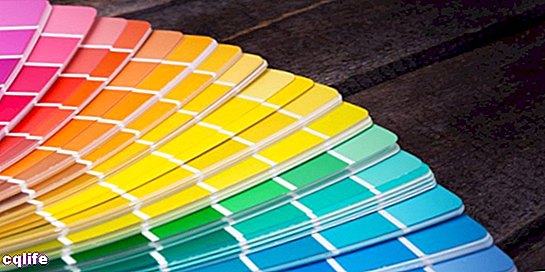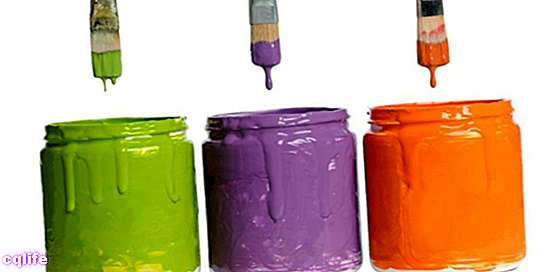We explain what color is and the different properties it has. Also, how the primary and secondary colors are formed.

What is the color?
When we speak of color, we refer to an impression produced in our visual organs (eyes), and interpreted by our nervous centers (brain), by a tone of light specific to the color spectrum.
All colors are contained in the spectrum of visible light, but at different wavelengths than our own. perception can capture separately, and identify as specific colors.
Things in the universe are impacted by the electromagnetic radiation of light, thus absorbing part of the waves light and reflecting some others. The latter are perceived by the human eye and identified as the color of things.
It is known that the human eye can capture a finite number of colors (with very many shades) when it is in a context of great lighting. When light is scarce, on the other hand, we perceive the world in black and white: the superposition of all colors (to reconstitute white light) or the total absence of light, respectively.
White light can be decomposed into all perceptible colors by means of a prism, as occurs naturally with raindrops in atmospheric suspension, thus giving rise to Rainbow.
Within the light visible to the human eye, light has various energy levels: from 380 to 780 nanometers. So each color has a specific wavelength level:
- purple (380-427 nm)
- Blue (427-476 nm)
- Cyan (476-497 nm)
- Green (497-570 nm)
- Yellow (570-581 nm)
- Orange (581-618 nm)
- Red (618-780 nm)
Below violet is ultraviolet light and above red is infrared. Neither of the two can be perceived by our eyes, although it can be perceived by those of certain animals, and they can also be detected by scientific apparatus specialized in light. This is of vital importance for astrophysics and also for the Theory of color, key knowledge for the art of painting.
Color properties

Colors are distinguished from each other by their wavelength, as we have said. And depending on their purity, we can speak of primary, secondary or tertiary colors. All, however, have the following three properties:
- Hue. Known as hue or hue, it depends on the wavelengths of the color to locate it within the chromatic circle. This is what approximates two colors that are close in their wavelengths, being able to convert one into the other.
- Saturation. Also known as purity or color, it has to do with the amount of color present at the same time, that is, with how vivid or intense it is, as it moves further away from the gray scale.
- Brightness. It depends on the amount of light present in the color, on a scale from black (no light) to white (too much light). A brighter color will present a greater amount of white than a dull one, closer to black.
Primary colors

These are known as primary or primitive colors that are used to obtain the entire set of other colors, that is, "pure" colors that cannot be obtained by combining the others. To said procedure of mixture of colors to obtain new ones, it is known as synthesis and can occur in three different ways:
- Additive synthesis. The colors are superimposed, adding light, and thus generating increasingly lighter tones. It takes place on monitors computer, screens TV or projectors movie theater. Its primary colors are red, green, and blue.
- Subtractive synthesis. The colors are superimposed, subtracting light, and thus generating increasingly darker tones. It takes place in prints and Photographs. Its primary colors are cyan, magenta, and yellow.
- Traditional synthesis. It is used by painting and Arts traditional, and although it is also subtractive, it is considered empirical, since it comes from historical experience with painting and mixing oils. Its primary colors are yellow, blue, and red.
Secondary colours

Secondary colors, logically, are those obtained by synthesizing the primary colors, that is, by mixing them. As we have already explained, this will depend on the type of synthesis that takes place, so secondary colors may vary.
- Additive synthesis. The secondary colors are cyan, magenta, and yellow.
- Subtractive synthesis. The secondary colors are red, green, and blue.
- Traditional synthesis. The secondary colors are green, orange, and purple.
